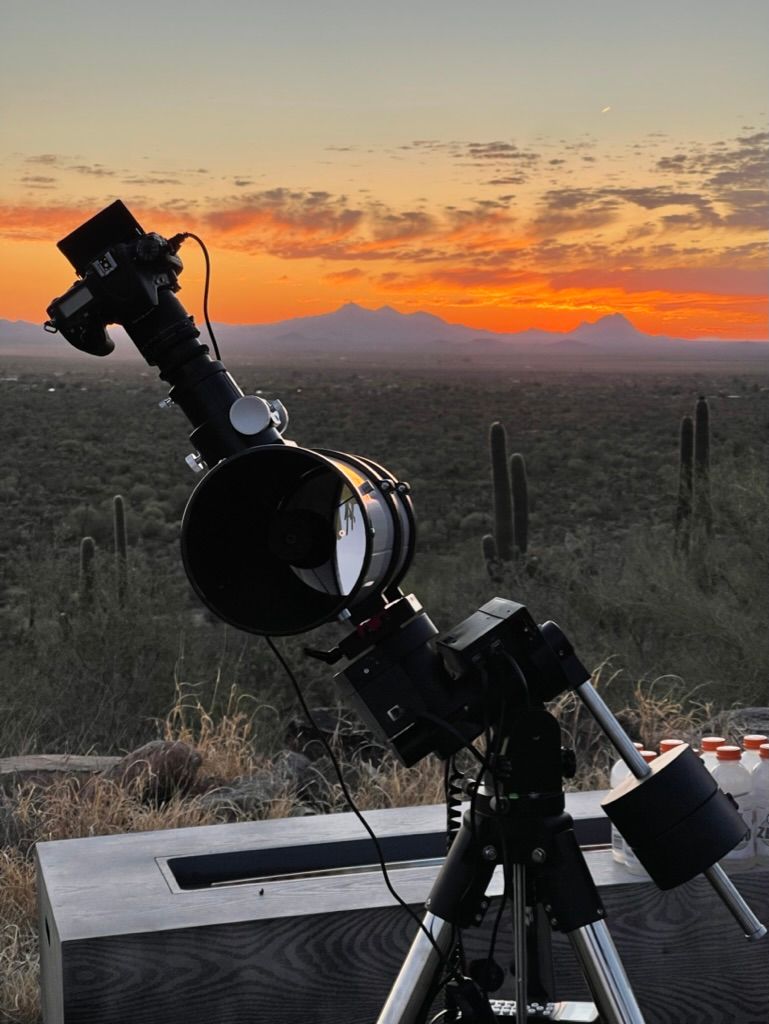Lunar Eclipse Triptych

A total lunar eclipse is (next to the much rarer solar eclipses) a spectacle to behold and one of the few celestial events that happen in human timescales in the course of a few hours.
In mid-May 2022 there was a beautiful eclipse visible from North America and I have made a sequence of photos and a triptych collage.

The first phase on the left shows the Earth's shadow starting to move over the disk of the full Moon (Lunar eclipses happen only during full Moon, because that's when the Moon is directly on a Sun-Earth-Moon line).
The second image is the full eclipse, showing the red-tinted shadow of the Earth, or wha't colloquially known as the Blood Moon. There's nothing sinister about it, it's red for the same reason sunrises and sunsets on Earth show a red sky: light is bent to higher wavelengths in the red in the Earth's atmosphere as photons emitted by the sun hit the atmosphere at a more and more oblique angle.
The third image shows the Earth's shadow leaving the Moon's disk. The reason the sunlit area of the Moon appears yellow in the first image and grey in the second is again the atmosphere of the Earth, but this time it's the light reflected from the Moon to us that hits at an oblique angle; the Moon was low to the horizon when the eclipse started, thus the yellowish appearance. At the end of the eclipse it was high enough in the sky that the reflected light wasn't shifted to appear red anymore.
During a total lunar eclipse you can also see stars near the Moon, because it's so much less bright. And that means you can see how the Moon moves across the sky as is circles the Earth once a month (in one day the Moon moves about 12 to 13 degrees relative to the stars).

This occasion marks the first outing of my new 6" Newtonian ƒ/4 reflector, a telescope specifically designed for photography.

Triptych composite of various phases, varying exposure times for HDR
Shot from my driveway near Tucson, AZ in May 2022
Telescope: TPO 6" Newtonian (610mm focal length ƒ/4)
Focal extender: Nikon 2x Teleconverter TC201 (extends to 1220mm)
Camera: Nikon D750 DSLR (full-frame, unmodified)
Mount: iOptron CEM26
Edited in Adobe Photoshop.
Copyright © 2022 by Thomas Fuchs. All rights reserved. You're free to use any of my images as wallpaper on your computer or phone. For other uses, including commercial use, derivative works or republishing, please contact me at thomas@slash7.com.